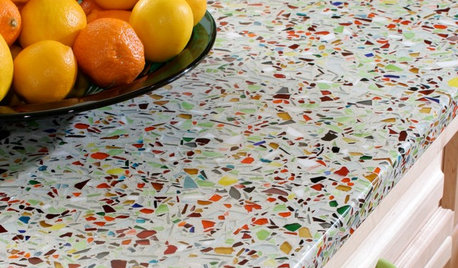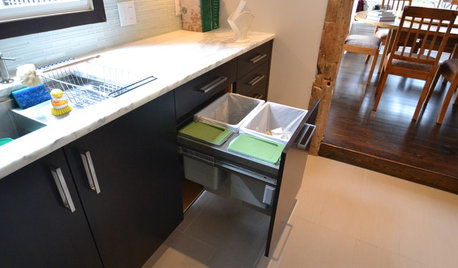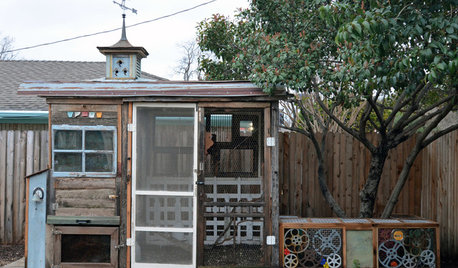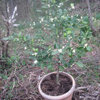Recycling Citrus Peels
johnorange
10 years ago
Related Stories

GARDENING GUIDESHow to Keep Your Citrus Trees Well Fed and Healthy
Ripe for some citrus fertilizer know-how? This mini guide will help your lemon, orange and grapefruit trees flourish
Full Story
GARDENING GUIDESSpring Citrus Care Reaps Months of Sweet Rewards
Learn how to tend citrus trees in spring and ways to preserve their delicious fruit
Full Story
KITCHEN DESIGNKitchen Counters: Sturdy, Striking Recycled Glass With Cement
Ecofriendly and full of character, this heat- and scratch-resistant material is a great fit for custom kitchen counters
Full Story
GREEN BUILDINGHow to Recycle Your Kitchen
Instead of adding to the junk pile — and paying landfill fees — get rid of old appliances, cabinets and countertops the ecofriendly way
Full Story
BEFORE AND AFTERSHouzz TV: See Recycled Walls and Cool Cassette Art in a Woodsy DIY Home
Walnut countertops join hardwood floors and pieces made from leftover framing in a bright Spanish colonial
Full Story
LOFTSHouzz Tour: A Commercial Laundry Gets Recycled Into a Dramatic Home
See how this 1923 behemoth becomes the ultimate home for entertaining and more
Full Story
BUDGET DECORATINGDumpster Decorating: Furnishing Your Home With Repurposed Pieces
Whether you call them reclaimed or recycled, these furnishings honor our pocketbooks and our planet
Full Story
SHOP HOUZZShop Houzz: 4 Ways to Show You Really Love Our Planet
Compost, recycle and save water and energy with these earth-loving picks
Full Story
DECORATING GUIDESGo Bold (and Green) with Eco-Friendly Carpet Tiles
Get Ideas For Your Own Recyclable Rug Made of Colorful Carpet Squares
Full Story
OUTBUILDINGSQuirky Meets Practical in a Dallas Chicken Coop
These hens have a stylish backyard coop built from recycled materials
Full Story







poncirusguy6b452xx
krismast
Related Professionals
West Milford Landscape Architects & Landscape Designers · Belmont Landscape Architects & Landscape Designers · Erie Landscape Architects & Landscape Designers · Mitchellville Landscape Architects & Landscape Designers · Towson Landscape Architects & Landscape Designers · Wilmington Landscape Contractors · Bridgeport Landscape Contractors · Fairview Landscape Contractors · Fort Payne Landscape Contractors · Framingham Landscape Contractors · Longview Landscape Contractors · Miller Place Landscape Contractors · River Ridge Landscape Contractors · Rockville Landscape Contractors · Crowley Landscape Contractorselliosc
johnmerr
rhizo_1 (North AL) zone 7
poncirusguy6b452xx
poncirusguy6b452xx
yukkuri_kame
elliosc
johnorangeOriginal Author
johnorangeOriginal Author
johnorangeOriginal Author
apg4
Citrus_canuck
NA